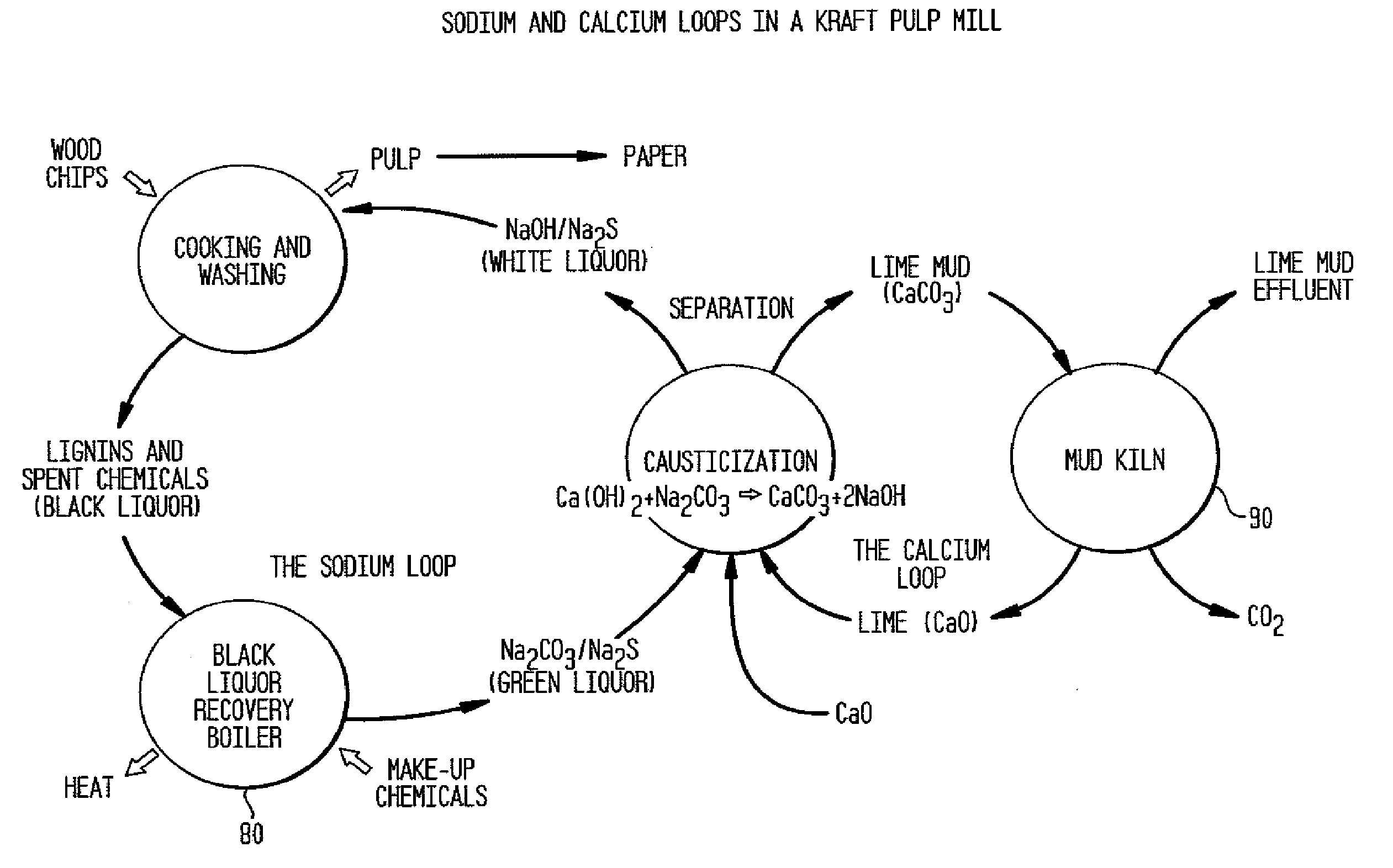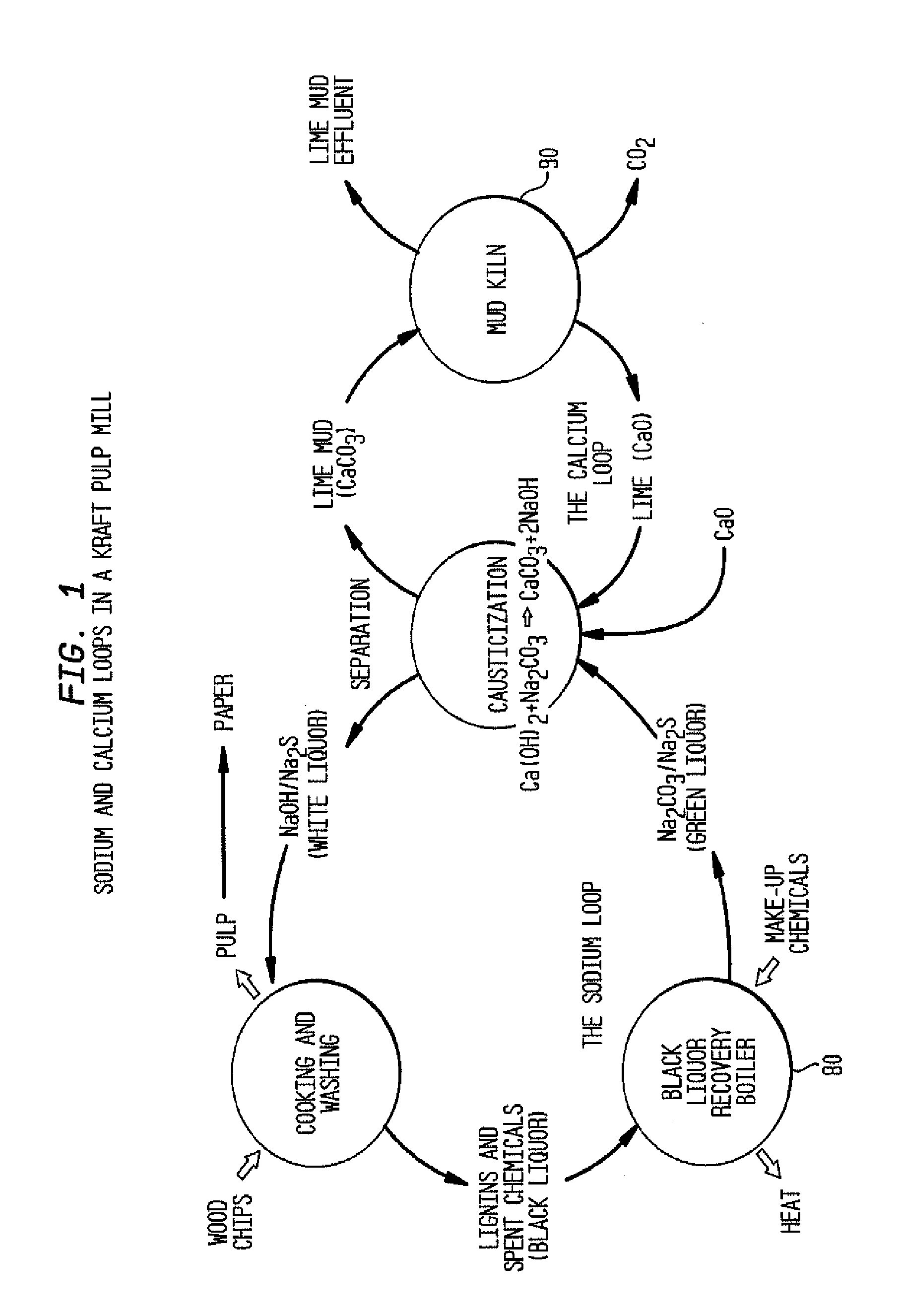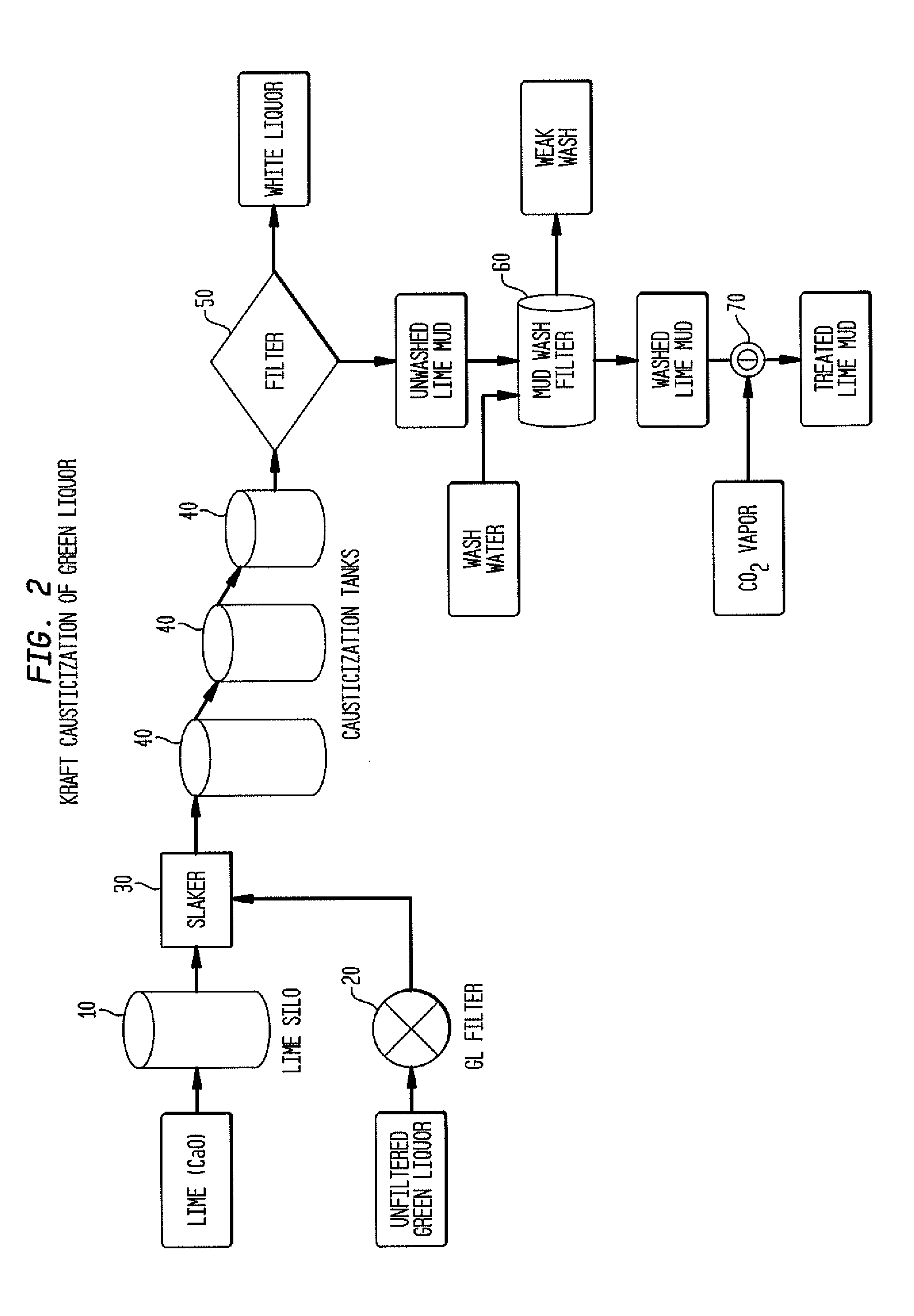Lime causticization product brightness improvement via pre-slaking
a technology of lime causticization product and pre-slaking, which is applied in the field of methods for obtaining particulate calcium carbonate, can solve the problems of inability to complete separation of sodium compounds, inability to slow or stop the transportation of materials through the kiln, and material loss of sodium from the sodium loop, so as to maximize the whiteness and brightness of lime mud, minimize the amount of water required for washing, and optimize the recovery of sodium species
- Summary
- Abstract
- Description
- Claims
- Application Information
AI Technical Summary
Benefits of technology
Problems solved by technology
Method used
Image
Examples
example 1
[0050]This Example is intended to be a comparative example carried out according to conventional means and not according to the method of the current invention. To a 4-liter SS reactor were added 1850 ml of kraft green liquor filtered through No. 4 Watman filter paper and comprised of, as dissolved species, 12.54 wt. % sodium carbonate (Na2CO3), 2.36 wt. % sodium sulfide (Na2S) and 1.59 wt. % sodium hydroxide (NaOH), and having a specific gravity of 1.21. The contents of the reactor were then heated to 95° C. and held at that temperature by means of a circulating bath containing a 1:1 mixture of ethylene glycol and water. Agitation was accomplished by means of an impeller rotating at 1000 rpm.
[0051]100 g of granular lime having an active CaO content of about 95% was added to the reactor over about 15 seconds, and the maximum temperature (Tmax) in the reactor was recorded as 102° C.
[0052]The mixture in the reactor was held at 95° C. under agitation for 180 minutes before passing the ...
example 2
[0053]This Example was carried out according to the process of the current invention. To a 4-liter SS reactor were added 1850 ml of the filtered kraft green liquor of Example 1. The contents of the reactor were then heated to 95° C. and held at that temperature by means of a circulating bath containing a 1:1 mixture of ethylene glycol and water. Agitation was accomplished by means of an impeller rotating at 1000 rpm.
[0054]To a 1-liter SS beaker containing 500 g of water at an initial temperature of 76° C. were added 100 g of the granular lime of Example 1. Slaking was carried out for 15 minutes under agitation by means of an impeller rotating at 1000 rpm. Tmax was recorded as 100° C. after about 1 minute.
[0055]The contents of the SS beaker were then poured into the SS reactor over about 1 minute at which time the temperature in the reactor dropped to about 92° C. before rising to 95° C. over about 5 minutes. The contents of the reactor were then agitated at temperature for 180 minut...
example 3
[0056]This is another Example carried out according to the process of the current invention.
[0057]To a 4-liter SS reactor were added 1850 ml of kraft green liquor filtered through No. 4 Watman filter paper and comprised of, as dissolved species, 12.54 wt. % sodium carbonate (Na2CO3), 2.36 wt. % sodium sulfide (Na2S) and 1.59 wt. % sodium hydroxide (NaOH). The contents of the reactor were then heated to 95° C. and held at that temperature by means of a circulating bath containing a 1:1 mixture of ethylene glycol and water. Agitation was accomplished by means of an impeller rotating at 1000 rpm.
[0058]To a 1-liter SS beaker containing 500 g of kraft mill white liquor comprised of, as dissolved species, 8.04 wt. % sodium hydroxide (NaOH), 1.93 wt. % sodium carbonate (Na2CO3) and 1.89 wt. % sodium sulfide (Na2S), and having a specific gravity of 1.15 at an initial temperature of 77° C. were added 100 g of the granular lime of Example 1. Slaking was carried out for 15 minutes under agitat...
PUM
 Login to View More
Login to View More Abstract
Description
Claims
Application Information
 Login to View More
Login to View More - R&D
- Intellectual Property
- Life Sciences
- Materials
- Tech Scout
- Unparalleled Data Quality
- Higher Quality Content
- 60% Fewer Hallucinations
Browse by: Latest US Patents, China's latest patents, Technical Efficacy Thesaurus, Application Domain, Technology Topic, Popular Technical Reports.
© 2025 PatSnap. All rights reserved.Legal|Privacy policy|Modern Slavery Act Transparency Statement|Sitemap|About US| Contact US: help@patsnap.com



